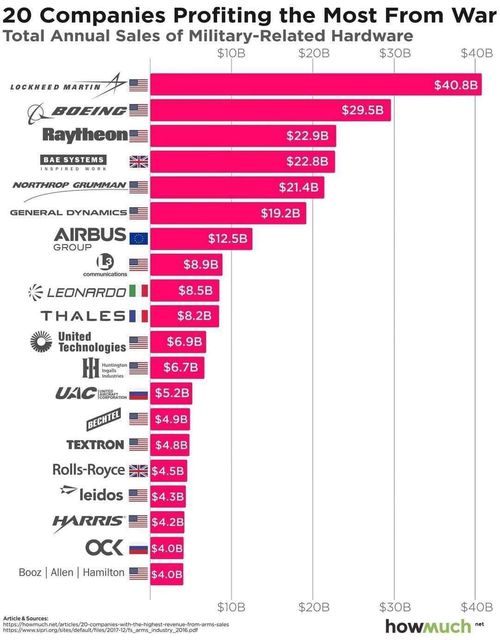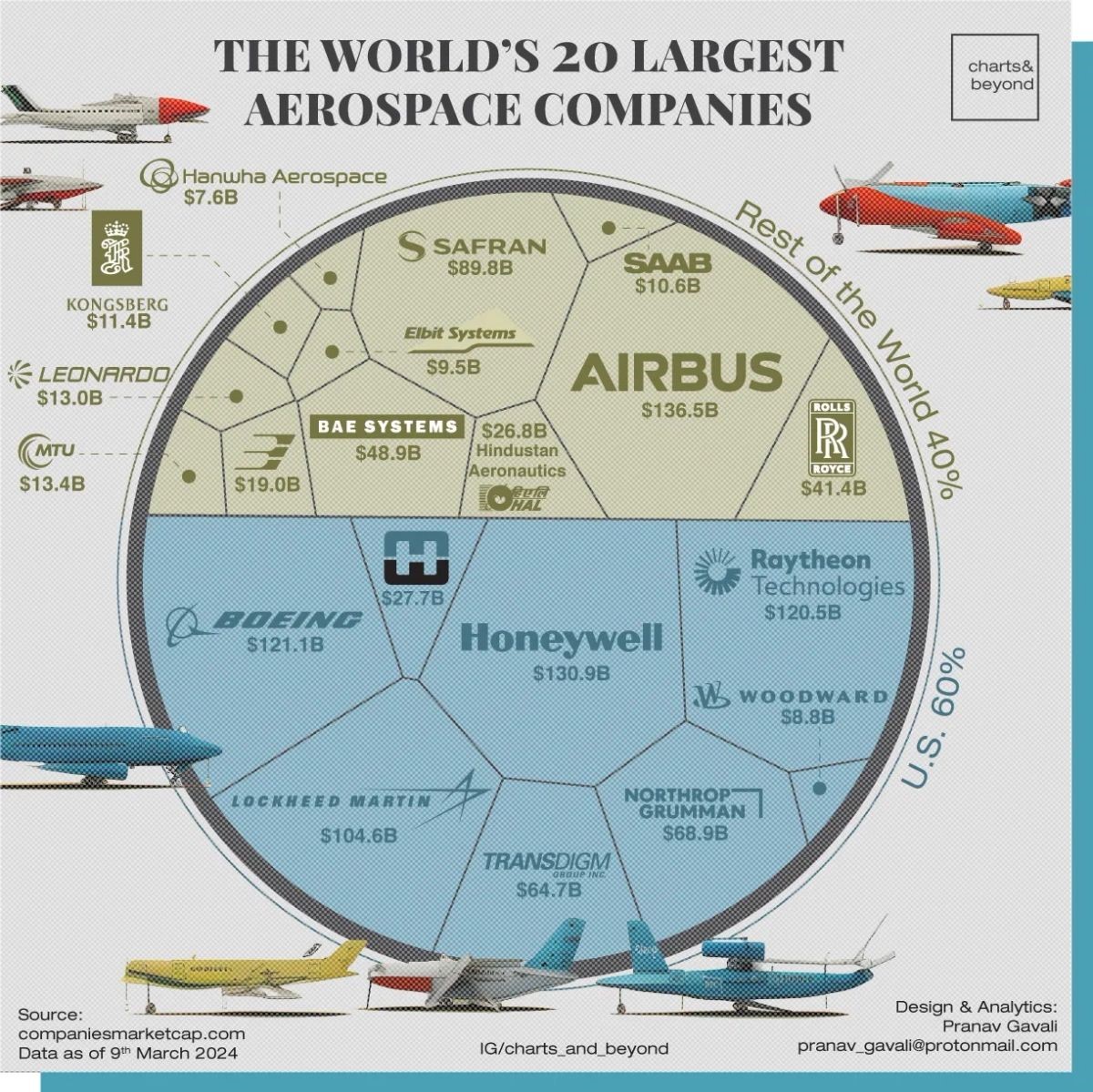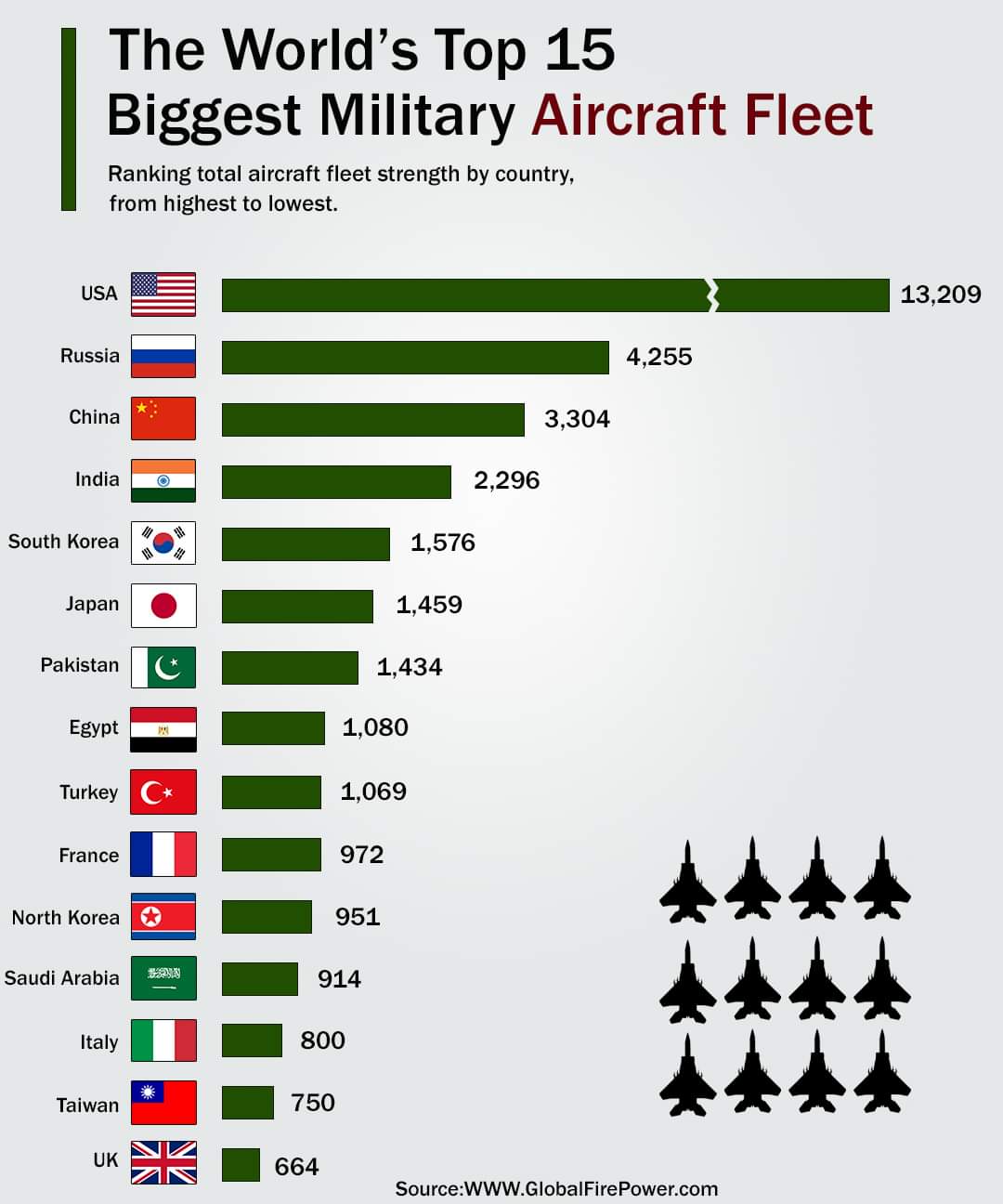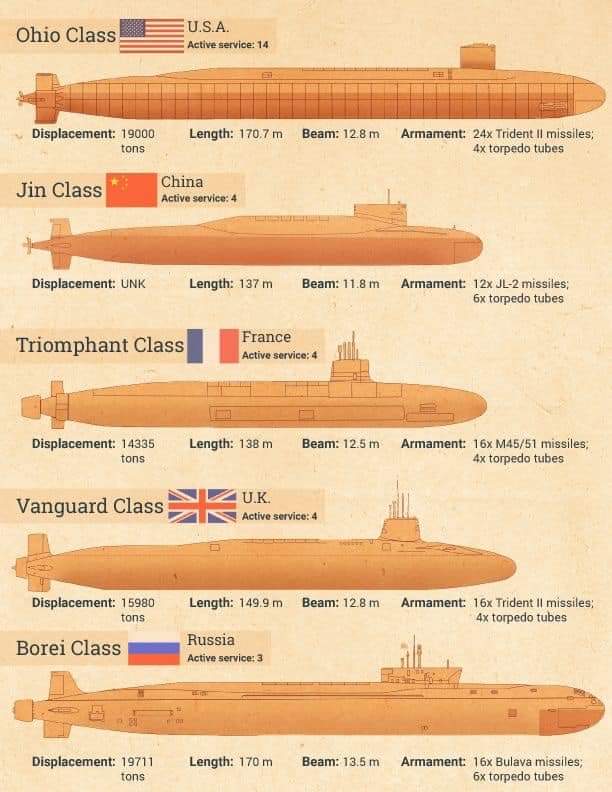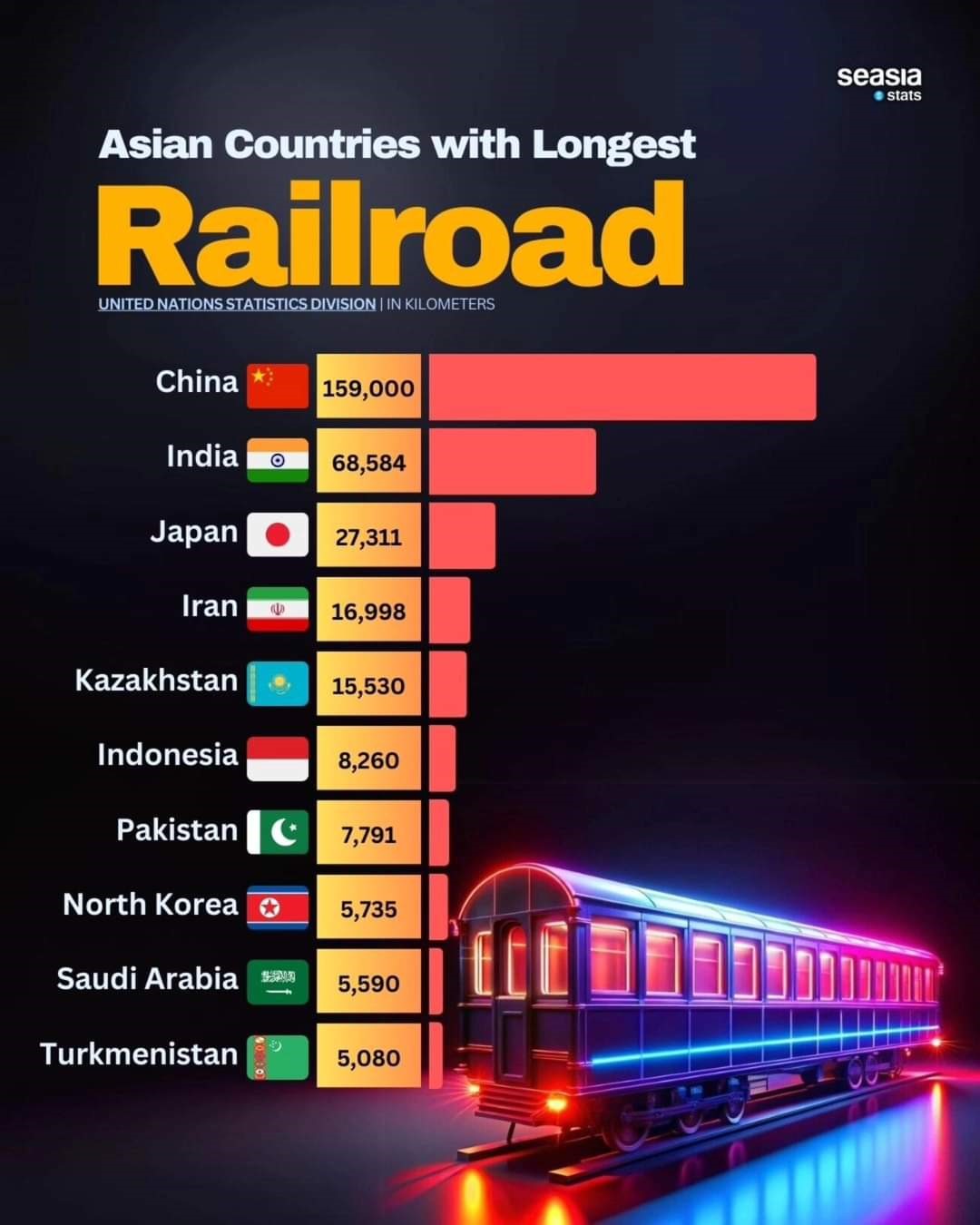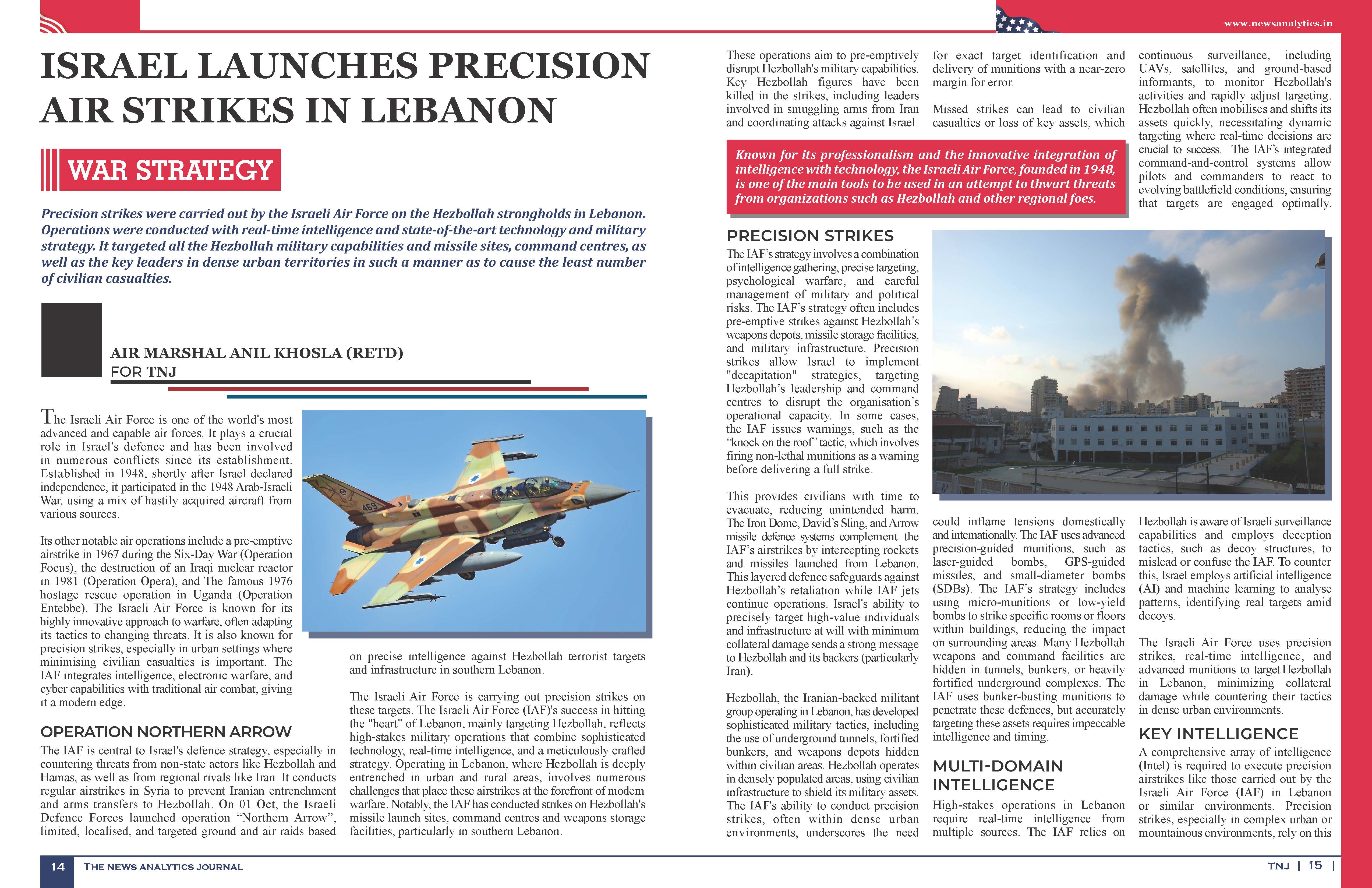
My article published in News Analytics Journal (Oct24)
The Israeli Air Force is one of the world’s most advanced and capable air forces. It plays a crucial role in Israel’s defence and has been involved in numerous conflicts since its establishment. Established in 1948, shortly after Israel declared independence, it participated in the 1948 Arab-Israeli War, using a mix of hastily acquired aircraft from various sources. Its other notable air operations include a pre-emptive airstrike in 1967 during the Six-Day War (Operation Focus), the destruction of an Iraqi nuclear reactor in 1981 (Operation Opera), and The famous 1976 hostage rescue operation in Uganda (Operation Entebbe). The Israeli Air Force is known for its highly innovative approach to warfare, often adapting its tactics to changing threats. It is also known for precision strikes, especially in urban settings where minimising civilian casualties is important. The IAF integrates intelligence, electronic warfare, and cyber capabilities with traditional air combat, giving it a modern edge.
Operation Northern Arrow. The IAF is central to Israel’s defence strategy, especially in countering threats from non-state actors like Hezbollah and Hamas, as well as from regional rivals like Iran. It conducts regular airstrikes in Syria to prevent Iranian entrenchment and arms transfers to Hezbollah. On 01 Oct, the Israeli Defence Forces launched operation “Northern Arrow”, limited, localised, and targeted ground and air raids based on precise intelligence against Hezbollah terrorist targets and infrastructure in southern Lebanon. The Israeli Air Force is carrying out precision strikes on these targets. The Israeli Air Force (IAF)’s success in hitting the “heart” of Lebanon, mainly targeting Hezbollah, reflects high-stakes military operations that combine sophisticated technology, real-time intelligence, and a meticulously crafted strategy. Operating in Lebanon, where Hezbollah is deeply entrenched in urban and rural areas, involves numerous challenges that place these airstrikes at the forefront of modern warfare. Notably, the IAF has conducted strikes on Hezbollah’s missile launch sites, command centers, and weapons storage facilities, particularly in southern Lebanon. These operations aim to pre-emptively disrupt Hezbollah’s military capabilities. Key Hezbollah figures have been killed in the strikes, including leaders involved in smuggling arms from Iran and coordinating attacks against Israel.
Multi-faceted Strategy. The Israeli Air Force (IAF) has developed and implemented a multi-faceted strategy to engage Hezbollah and other militant groups operating in Lebanon. Instead of large-scale bombing campaigns, the IAF uses surgical strikes to take out specific targets. Striking at the “heart of Lebanon” refers to hitting key Hezbollah targets embedded within the country’s infrastructure, leadership, and military capabilities. The IAF’s strategy involves a combination of intelligence gathering, precise targeting, psychological warfare, and careful management of military and political risks. The IAF’s strategy often includes pre-emptive strikes against Hezbollah’s weapons depots, missile storage facilities, and military infrastructure. Precision strikes allow Israel to implement “decapitation” strategies, targeting Hezbollah’s leadership and command centers to disrupt the organisation’s operational capacity. In some cases, the IAF issues warnings, such as the “knock on the roof” tactic, which involves firing non-lethal munitions as a warning before delivering a full strike. This provides civilians with time to evacuate, reducing unintended harm. The Iron Dome, David’s Sling, and Arrow missile defence systems complement the IAF’s airstrikes by intercepting rockets and missiles launched from Lebanon. This layered defence safeguards against Hezbollah’s retaliation while IAF jets continue operations. Israel’s ability to precisely target high-value individuals and infrastructure at will with minimum collateral damage sends a strong message to Hezbollah and its backers (particularly Iran). The threat of precision strikes on Hezbollah’s leadership, or even broader infrastructure, serves as a powerful deterrent.
Precision Challenges in Dense Urban Environment. Hezbollah, the Iranian-backed militant group operating in Lebanon, has developed sophisticated military tactics, including the use of underground tunnels, fortified bunkers, and weapons depots hidden within civilian areas. Hezbollah operates in densely populated areas, using civilian infrastructure to shield its military assets. This makes airstrikes inherently risky as they can cause collateral damage, potentially triggering international condemnation or fuelling strong anti-Israeli sentiment within Lebanon. The IAF’s ability to conduct precision strikes, often within dense urban environments, underscores the need for exact target identification and delivery of munitions with a near-zero margin for error. Missed strikes can lead to civilian casualties or loss of key assets, which could inflame tensions domestically and internationally. The IAF uses advanced precision-guided munitions, such as laser-guided bombs, GPS-guided missiles, and small-diameter bombs (SDBs). The IAF’s strategy includes using micro-munitions or low-yield bombs to strike specific rooms or floors within buildings, reducing the impact on surrounding areas. Many Hezbollah weapons and command facilities are hidden in tunnels, bunkers, or heavily fortified underground complexes. The IAF uses bunker-busting munitions to penetrate these defences, but accurately targeting these assets requires impeccable intelligence and timing.
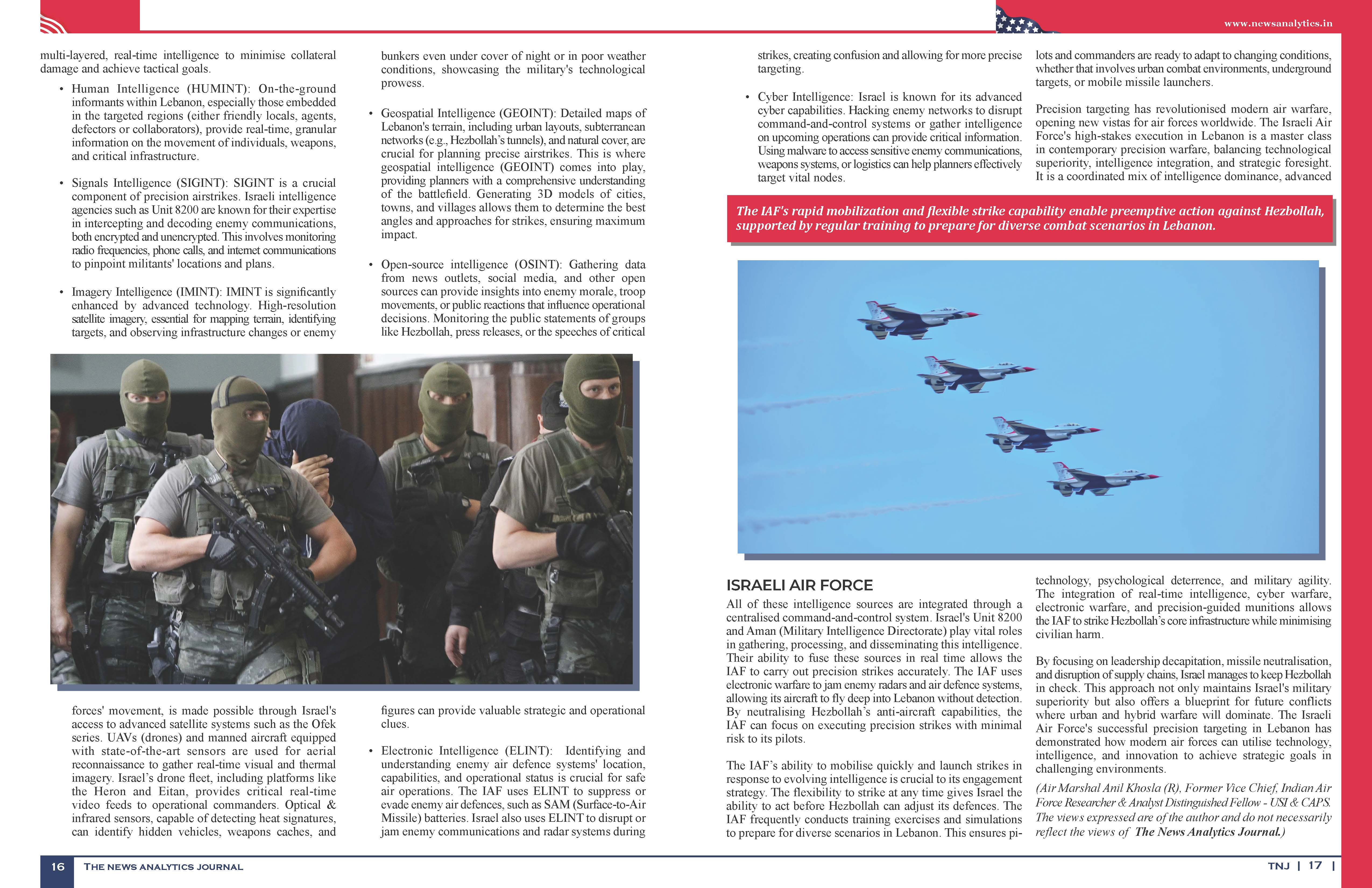
Reliance on Real-Time, Multi-Domain Intelligence and Systems.
High-stakes operations in Lebanon require real-time intelligence from multiple sources. The IAF relies on continuous surveillance, including UAVs, satellites, and ground-based informants, to monitor Hezbollah’s activities and rapidly adjust targeting. Hezbollah often mobilises and shifts its assets quickly, necessitating dynamic targeting where real-time decisions are crucial to success. The IAF’s integrated command-and-control systems allow pilots and commanders to react to evolving battlefield conditions, ensuring that targets are engaged optimally. Hezbollah is aware of Israeli surveillance capabilities and employs deception tactics, such as decoy structures, to mislead or confuse the IAF. To counter this, Israel employs artificial intelligence (AI) and machine learning to analyse patterns, identifying real targets amid decoys.
Type of Intels. A comprehensive array of intelligence (Intel) is required to execute precision airstrikes like those carried out by the Israeli Air Force (IAF) in Lebanon or similar environments. Precision strikes, especially in complex urban or mountainous environments, rely on this multi-layered, real-time intelligence to minimise collateral damage and achieve tactical goals.
-
- Human Intelligence (HUMINT). On-the-ground informants within Lebanon, especially those embedded in the targeted regions (either friendly locals, agents, defectors or collaborators), provide real-time, granular information on the movement of individuals, weapons, and critical infrastructure.
-
- Signals Intelligence (SIGINT). SIGINT is a crucial component of precision airstrikes. Israeli intelligence agencies such as Unit 8200 are known for their expertise in intercepting and decoding enemy communications, both encrypted and unencrypted. This involves monitoring radio frequencies, phone calls, and internet communications to pinpoint militants’ locations and plans.
-
- Imagery Intelligence (IMINT). IMINT is significantly enhanced by advanced technology. High-resolution satellite imagery, essential for mapping terrain, identifying targets, and observing infrastructure changes or enemy forces’ movement, is made possible through Israel’s access to advanced satellite systems such as the Ofek series. UAVs (drones) and manned aircraft equipped with state-of-the-art sensors are used for aerial reconnaissance to gather real-time visual and thermal imagery. Israel’s drone fleet, including platforms like the Heron and Eitan, provides critical real-time video feeds to operational commanders. Optical & infrared sensors, capable of detecting heat signatures, can identify hidden vehicles, weapons caches, and bunkers even under cover of night or in poor weather conditions, showcasing the military’s technological prowess.
-
- Geospatial Intelligence (GEOINT). Detailed maps of Lebanon’s terrain, including urban layouts, subterranean networks (e.g., Hezbollah’s tunnels), and natural cover, are crucial for planning precise airstrikes. This is where geospatial intelligence (GEOINT) comes into play, providing planners with a comprehensive understanding of the battlefield. Generating 3D models of cities, towns, and villages allows them to determine the best angles and approaches for strikes, ensuring maximum impact.
-
- Open-source intelligence (OSINT): Gathering data from news outlets, social media, and other open sources can provide insights into enemy morale, troop movements, or public reactions that influence operational decisions. Monitoring the public statements of groups like Hezbollah, press releases, or the speeches of critical figures can provide valuable strategic and operational clues.
-
- Electronic Intelligence (ELINT). Identifying and understanding enemy air defence systems’ location, capabilities, and operational status is crucial for safe air operations. The IAF uses ELINT to suppress or evade enemy air defences, such as SAM (Surface-to-Air Missile) batteries. Israel also uses ELINT to disrupt or jam enemy communications and radar systems during strikes, creating confusion and allowing for more precise targeting.
-
- Cyber Intelligence. Israel is known for its advanced cyber capabilities. Hacking enemy networks to disrupt command-and-control systems or gather intelligence on upcoming operations can provide critical information. Using malware to access sensitive enemy communications, weapons systems, or logistics can help planners effectively target vital nodes.
All of these intelligence sources are integrated through a centralised command-and-control system. Israel’s Unit 8200 and Aman (Military Intelligence Directorate) play vital roles in gathering, processing, and disseminating this intelligence. Their ability to fuse these sources in real-time allows the IAF to carry out precision strikes accurately. The IAF uses electronic warfare to jam enemy radars and air defence systems, allowing its aircraft to fly deep into Lebanon without detection. By neutralising Hezbollah’s anti-aircraft capabilities, the IAF can focus on executing precision strikes with minimal risk to its pilots.
The IAF’s ability to mobilise quickly and launch strikes in response to evolving intelligence is crucial to its engagement strategy. The flexibility to strike at any time gives Israel the ability to act before Hezbollah can adjust its defences. The IAF frequently conducts training exercises and simulations to prepare for diverse scenarios in Lebanon. This ensures pilots and commanders are ready to adapt to changing conditions, whether that involves urban combat environments, underground targets, or mobile missile launchers.
Precision targeting has revolutionised modern air warfare, opening new vistas for air forces worldwide. The Israeli Air Force’s high-stakes execution in Lebanon is a master class in contemporary precision warfare, balancing technological superiority, intelligence integration, and strategic foresight. It is a coordinated mix of intelligence dominance, advanced technology, psychological deterrence, and military agility. The integration of real-time intelligence, cyber warfare, electronic warfare, and precision-guided munitions allows the IAF to strike Hezbollah’s core infrastructure while minimising civilian harm. By focusing on leadership decapitation, missile neutralisation, and disruption of supply chains, Israel manages to keep Hezbollah in check. This approach not only maintains Israel’s military superiority but also offers a blueprint for future conflicts where urban and hybrid warfare will dominate. The Israeli Air Force’s successful precision targeting in Lebanon has demonstrated how modern air forces can utilise technology, intelligence, and innovation to achieve strategic goals in challenging environments.
Your valuable comments are most welcome.
For regular updates, please register your email here:-
References and credits
To all the online sites and channels.
Disclaimer:
Information and data included in the blog are for educational & non-commercial purposes only and have been carefully adapted, excerpted, or edited from reliable and accurate sources. All copyrighted material belongs to respective owners and is provided only for wider dissemination.


